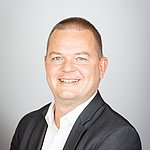Summary
In Europe, a series of Roaming Regulations has been in place since 2007, setting price caps for roaming services and accompanied by complementary measures to increase the transparency of roaming prices. These measures have effectively reduced prices by more than 80%; however, they have not introduced a competitive dynamic that would make further regulation unnecessary.
This failure is largely the result of the complex nature and causes of high roaming prices, including the double marginalisation problem between the Home and Visited Network (HN and VN), and in the low price elasticity of demand for roaming voice services.
The Roaming Regulation of 2012 attempted to tackle these challenges by means of structural solutions whereby consumers would be able to separately purchase roaming services from firms other than their HN. The structural solutions sought to address the underlying causes of high roaming prices by means of an intensification of competition. BEREC provided guidelines to enable implementation either of an Alternative Roaming Provider (ARP) using Single IMSI technology, or a data-only Local Break-Out (LBO) solution.
The Commission’s surprising proposals in the September 2013 Telecoms Single Market (TSM) legislative package, which called for rapid abolition of roaming surcharges and for selective elimination of the obligations that underlie the structural solutions, led to enormous uncertainty among potential providers of roaming structural solutions. Meanwhile, in Regulation 2015/2120 enacted in October 2015, the European institutions aim to totally eliminate roaming surcharges in Europe by June 2017.
The Commission’s TSM proposals of 2013 undermined the prospects of a profitable business model for the structural solutions before they had even come fully into force. The hoped-for intensification of roaming competition has not emerged because there has been negligible market entry of firms wishing to compete by means of the structural solutions. Regulation 2015/2120 has eliminated ARP; however, there is a slight chance that LBO solutions might gain traction in the future.
The main effects that are visible are negative. Mobile Network Operators (MNOs) were legally obliged to make significant investments to support ARP competitors that in reality never emerged. Software providers and at least one potential ARP competitor also invested in a business model that has already been abandoned. In sum, the structural solutions together with the Commission’s change of course with their 2013 proposal for a TSM Regulation have led to significant costs for the mobile sector, with no visible compensating benefits.
Discussion Paper is available for download.



